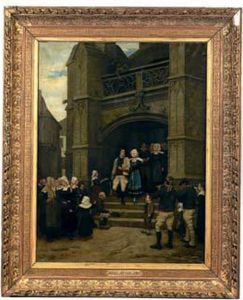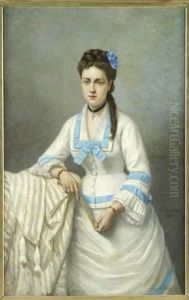Charles Theophile Demory Paintings
Charles Théophile Demory was a French artist born in 1846, primarily known for his work as a painter. While there is not an extensive amount of information readily available about his life and career, he was active during a period in French art that was characterized by significant transitions, including the move from traditional academic art to more modern movements such as Impressionism.
Demory's life spanned a period of great change in the art world. Born in the mid-19th century, he would have been a contemporary of the Impressionists, who were beginning to shake the foundations of the art world in France with their revolutionary approach to painting. However, Demory remained more traditional in his style, often focusing on landscapes, genre scenes, and portraits. His work reflected a keen observation of daily life and an interest in capturing the interplay of light and shadow, which suggests that while he may not have been an Impressionist, he was certainly influenced by the changes happening around him.
Demory exhibited his artwork in salons and galleries, which was the traditional path for artists of his time to gain recognition. His paintings would have been seen by the public and by critics, who were the gatekeepers of an artist's reputation. Unfortunately, like many artists of his era, Demory did not achieve widespread fame, and as a result, his works are not as well-known or as extensively documented as those of some of his contemporaries.
Charles Théophile Demory passed away in 1928. His death marked the end of a life dedicated to art during one of its most dynamic periods. The lack of detailed records and the overshadowing fame of other artists from his time have left Demory as a somewhat obscure figure in the history of art. Nonetheless, his contributions to the French art scene of the late 19th and early 20th centuries provide an example of the many skilled artists whose works are waiting to be rediscovered and appreciated anew by art historians and enthusiasts.


